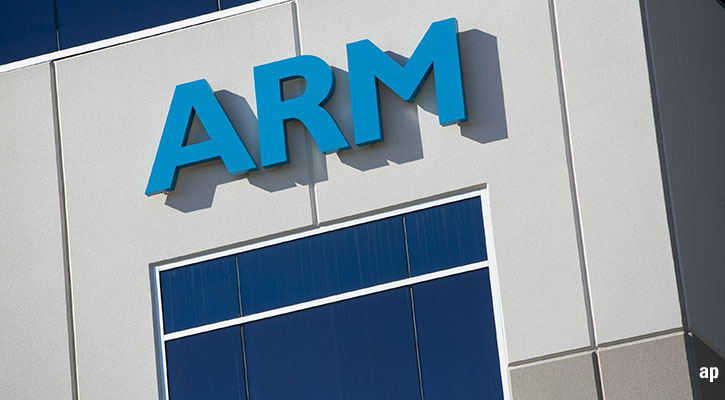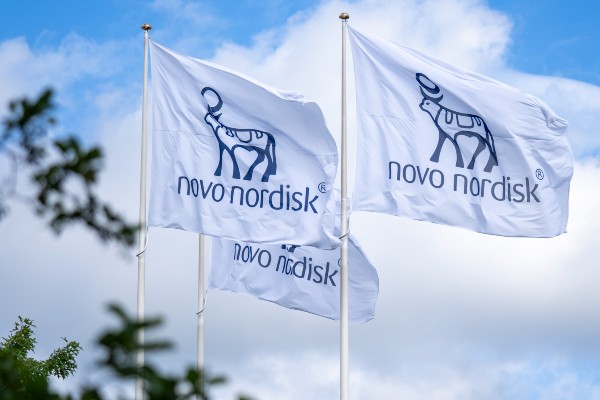
Arm Holdings (ARM) reported fourth-quarter earnings on May 8. With Arm stock up 56% in 2024, here’s Morningstar’s take on Arm’s earnings and the outlook for its stock.
Key Morningstar Metrics for Arm Holdings Stock
• Fair Value Estimate: $57.00
• Morningstar Rating: ★
• Morningstar Economic Moat Rating: Wide
• Fair Value Uncertainty: High
Although shares have declined by about 20% since their $150 peak in February, Arm trades at a 105% premium to its fair value.
What We Thought of Arm’s Earnings
Despite the company doing a double beat on revenue and adjusted EPS, shares went down 10% aftermarket on the day of the earnings report. This demonstrates how demanding the market will be with Arm. For the next quarter, anything not at the high part of the guidance range or better will be perceived as a miss.
Management guided for roughly 20% revenue growth in 2026 and 2027, in line with Morningstar’s estimates. This highlights how well Arm is executing, with market share gains and price increases through royalty rate raises.
The cloud and automotive businesses were the bright spots, while the industrial market was the weakest area.
The stock is still highly overvalued in the $100s range, thanks to the great expectations around it.
Fair Value Estimate for Arm
With its 1-star rating, we believe Arm’s stock is significantly overvalued compared with our long-term fair value estimate. Our increased fair value estimate comes from higher licensing revenue and royalty rates over the longer term. We estimate royalty rates for v9 could be 3%-4%, compared with the 1.7% blended rate the firm reported in its IPO filing for 2022. Adoption of v9 keeps increasing mainly thanks to adoption in smartphones and the data centre, and management sees it increasing in the following year. Our fair value estimate represents an EBIT multiple of 42 times for fiscal 2024 and 38 times for fiscal 2025.
Overall, we model Arm’s revenue seeing a 13% compound annual growth rate over the next 10 years. We expect royalty revenue will grow in the high-single-digit or double-digit range, while licensing revenue will grow by the mid-single-digits. Arm’s average royalty rate in 2022 was 1.7%, and we expect that to expand to more than 3% in 2030 after the introduction of v9 and future architecture improvements. After our 10-year explicit period, we model double-digit returns on new invested capital and mid-single-digit growth in profits for another 10 years, in line with the modelling for a wide-moat firm.
Economic Moat Rating
We assign Arm a wide moat based on intangible assets and switching costs. Arm is the IP owner and developer of the ARM (Acorn RISC Machine) architecture, which is used in 99% of the world’s smartphone CPU cores. The firm also has a high market share in other battery-powered devices, like wearables, tablets, and sensors.
In a chip, the instruction set architecture, or ISA, is a set of instructions that act as the middleman between the hardware and the software, dictating how the hardware behaves when it receives software instructions. Examples of architecture instructions include 1) arithmetic instructions (addition, subtraction, multiplication), 2) memory instructions, which facilitate the transfer of data between the CPU registers and the memory, and 3) data pathway instructions, which define the speed at which data moves between the CPU and the registers (temporary storage locations). Software written for a certain architecture won’t work straightforwardly in a different architecture, creating switching costs.
Read more about Arm’s moat rating.
Financial Strength
We think Arm is financially healthy, with $1.6 billion of cash on hand and no debt. According to its IPO filing, the firm does not intend to pay any dividend on its ordinary shares. We also don’t expect any significant M&A, as Arm would probably face antitrust scrutiny in any mid-sized or large deal, given its high market share. We expect Arm will use its internally generated cash flow to reinvest in the business through R&D, fund share repurchases, or simply build more cash on the balance sheet.
Read more about Arm’s financial strength.
Risk and Uncertainty
We give Arm a High Uncertainty Rating, with key risks coming from China and the slow but steady adoption of RISC-V architecture.
More than 20% of Arm’s business comes from China. Arm China is the only entity allowed to sell its IP in the country, but the company does not control Arm China. Rather, Arm licenses IP to Arm China, which sublicenses it to Chinese customers like Xiaomi or Huawei. Arm’s revenue recognition from the country depends on the information Arm China provides, and financial reporting controls there have historically been weak. SoftBank, Arm’s main shareholder, still has significant influence over Arm China. There could be attempts to steal intellectual property from Arm China, given the geopolitical tensions between the United States and China. Previous Arm China CEO Allen Wu was accused of behaving unethically and ejected in 2022 after months of corporate fighting, but he still has a stake in the company.
Read more about Arm’s risk and uncertainty.
Arm Bulls Say
• We expect Arm will keep gaining market share in the data centre business from x86 architecture, as its chips consume less power and data centres need to minimise their energy consumption. We also expect share gains in the automotive segment, thanks to the transition to electric vehicles.
• The overall trend toward the Internet of Things and battery-powered devices is a long-term tailwind for Arm, as it has the most energy-efficient architecture.
• If Arm manages to change its business model and charge royalties on a per-device basis, this would provide huge revenue and margin upside.
Arm Bears Say
• If Arm manages to charge royalties on a per-device basis, or if it were to meaningfully increase its royalty rates per chip, it could become a double-edged sword. Too much royalty revenue may encourage customers to adopt open-source RISC-V instead.
• Arm China is one of Arm’s largest clients, representing more than 20% of revenue. Its financial reporting has historically been opaque, and there could be attempts to steal Arm’s intellectual property.
• Arm’s revenue concentration is very high, with its top five customers representing close to 60% of sales.
This article was compiled by Tom Lauricella.








.jpg)



















